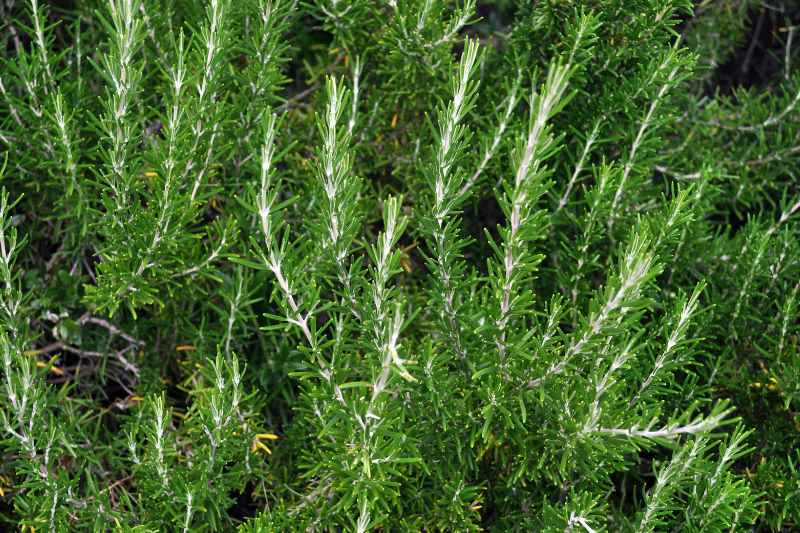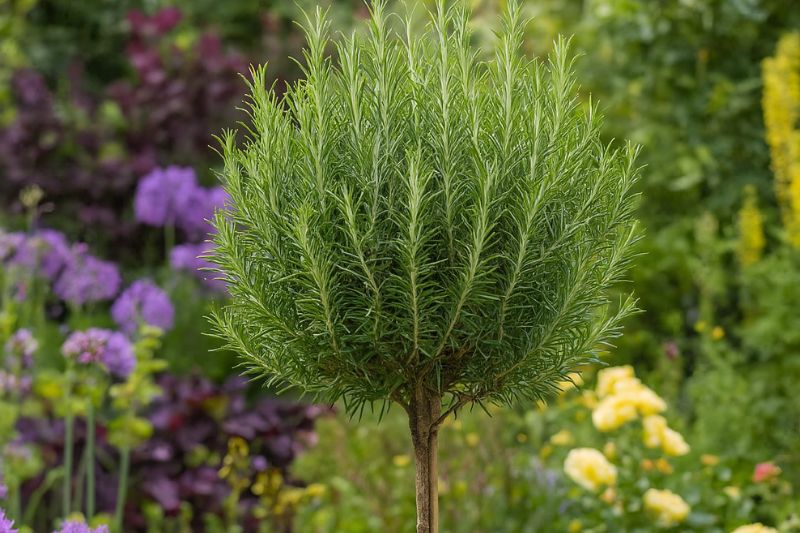Rosemary is a shrub valued for its aromatic leaves essential for flavouring grilled dishes and meals, as well as its delicate flowers. Rosemary is a medium-sized bush that can reach heights of 1 to 2 metres with rapid growth. Shaping rosemary into a standard form allows for better control of its development, gives it an aesthetically pleasing rounded shape, and makes maintenance and leaf harvesting easier. In pots, this type of pruning will help manage the height and balance of the bush. Follow our tips to learn how to train your rosemary into a standard form and care for it.

Why choosing to shape rosemary into a standard form?
Shaping rosemary into a standard form is an excellent choice if you seek a refined aesthetic for your garden, balcony, or terrace, transforming the bush into a small elegant tree. This method allows for precise control of its development, limiting its ground space and making it ideal for small areas. In addition to its visual appeal, shaping a rosemary tree facilitates leaf harvesting and improves air circulation around the plant. However, it is important to be aware that this approach requires initial and regular maintenance and makes the plant more vulnerable to wind without proper staking.
When to shape rosemary into a standard form?
To obtain a rosemary in standard form, the best time to start this training is at the end of winter or the beginning of spring, before growth begins. During this period, the plant comes out of its dormancy phase. This will allow the cuts to heal more quickly. It is best to prune in dry weather to prevent the wounds from rotting. However, you can prune all year round, except during frost periods.
How to shape rosemary into a standard form?
This type of pruning will prevent your rosemary from forming old wood and encourages vigorous regrowth. Old wood on a rosemary plant is recognised by its thicker, woody appearance, greyish or brownish colour, and absence of leaves or the presence of very sparse leaves that are often dried out. Pruning also encourages the formation of new shoots. Pruning the rosemary should only be done on wood from the current year, which is still green and tender, with leaves.
- Choose a healthy, vigorous rosemary plant with a strong central stem.
- Remove all lateral branches from the lower two-thirds of the central stem using a sharp pruning shear. This will encourage upward growth.
- Leave a few branches at the top of the central stem to form the crown of your rosemary in standard form. Prune these branches to give them a rounded shape. You will prune the head shoots as soon as they reach about 10 cm in length to form a balanced and compact crown.
- Attach the central stem to a stake using soft ties to keep it upright, especially if your rosemary is still young or if you live in a windy area. You will add ties as it grows to support it.
- Regularly remove any suckers that emerge from the stump and new shoots that appear on the central stem to promote dense growth in the upper part.

How to care for a pruned rosemary in standard form ?
Avoid pruning old branches that no longer have foliage, as rosemary never regrows on old wood. You will find the specific needs of rosemary in our article “ Rosemary : planting, benefits, harvesting ”.
Necessary materials
- Sharp pruning shears or a boxwood shear
- A stake
- Some ties or staking collars
































Comments